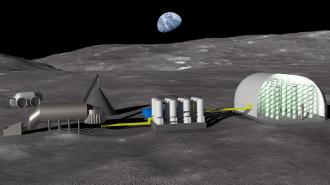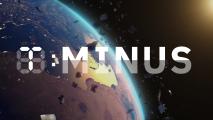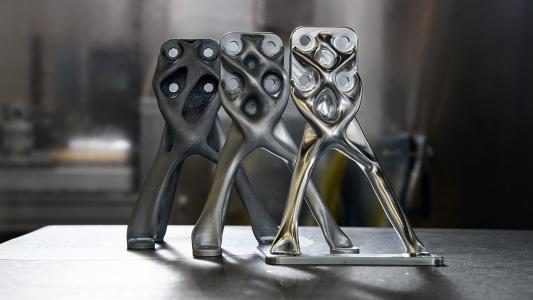The European Space Agency (ESA) has launched a project to figure out how to pull valuable nutrients from lunar regolith so that future astronauts can use them in hydroponic gardens.
“This work is essential for future long-term lunar exploration,” said Malgorzata Holynska, ESA materials and processes engineer.
The challenge: ESA hopes to send its first astronaut to the moon’s surface by 2030 before ultimately joining NASA in establishing a long-term lunar presence.
The cost of constantly sending supplies to the moon for those astronauts will be astronomical, so both ESA and NASA are looking for ways to take advantage of lunar resources to create food, water, and oxygen for moon dwellers.
Lunar soil compacts when wetted, which makes it hard for plants to germinate and take root.
In May 2022, scientists from the University of Florida proved it was possible to grow plants in lunar soil, but the seedlings weren’t as robust as those grown in terrestrial soil, and when analyzed at the genetic level, they showed signs of stress.
That study also noted that lunar regolith appeared to inhibit root growth; according to ESA, this is because lunar soil compacts when wetted, which makes it hard for plants to germinate and take root.
The project: Rather than trying to grow plants in lunar soil, ESA is now looking into growing them in nutrient-rich water. This technique — hydroponic farming — is well-established on Earth, and ESA thinks it could be the key to feeding lunar astronauts.
To find out, it launched a year-long project — “Enabling Lunar In-Situ Agriculture by Producing Fertilizer from Beneficiated Regolith” — in December 2022.
Beneficial nutrients could potentially be pulled from lunar regolith and then used to hydroponically grow food.
“Beneficiated” means dividing the raw material into desirable and undesirable elements — in this case, essentially, extracting nutrients from moon rock and dust. The initiative is being led by Norway’s Solsys Mining, a startup focused on space-based beneficiation and off-world hydroponic agriculture.
Solsys will be supported in the project by the Geotechnical Institute and Centre for Interdisciplinary Research in Space.
Looking ahead: Over the next 10 months, the researchers will trial different ways to extract nutrients from simulated lunar regolith, concentrating valuable ones while removing ones that may be undesirable.
“Achieving a sustainable presence on the Moon will involve using local resources.”
Malgorzata Holynska
The idea is that the beneficial nutrients could then be dissolved in the water used to hydroponically grow food for lunar astronauts.
“Achieving a sustainable presence on the Moon will involve using local resources and gaining access to nutrients present in lunar regolith with the potential to help cultivate plants,” said Holynska.
“The current study represents a proof of principle using available lunar regolith simulants,” she continued, “opening the way to more detailed research in future.”
We’d love to hear from you! If you have a comment about this article or if you have a tip for a future Freethink story, please email us at [email protected].






